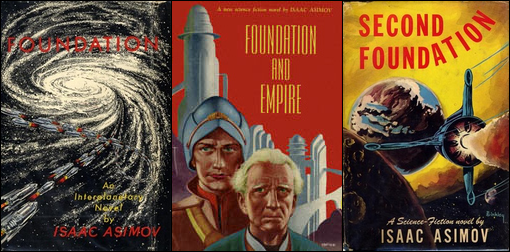
| Read Log, July-September 2021 | ||||
| By Tal Cohen | Friday, 29 October 2021 | |||
Physically, volumes V and VI (the first in the series to be printed in hardcover) are shameful: low-quality print (seems like a 300 DPI laser printer or something), and it appears like paperback copies with a hardcover glued to them. Luckily, they’ve got their act together by volume VII. Other shameful things that mar the experience are more about the content than the physical books; for example, that sentence in Babylon’s Ashes that says, “Ten billion people who needed food or water or shelter [... but] there were places for maybe as many as a quarter million. Two-and-a-half-hundred-thousandths of a percent of the people in need. He [Holden] couldn’t believe it was right, and tried to figure it again. He came to the same number.” Except that 250,000 out of 10 billion is not (2.5/100,000)%, it’s actually 2.5/100,000, or (2.5/1,000)%. Beyond petty math errors, the plot fails to deliver at times. For example, Holden choosing to disable the torpedoes fired upon the Inaros’s ship makes zero sense. He wanted to save Naomi’s son? Really? The co-conspirator of the crime that led to over ten billion deaths? Not to mention that Marco himself was there. And Amos just accepts this decision with a shrug. In Persepolis Rising, we’re suddenly doing an exploration of political philosophies, contrasting Libertarianism and totalitarianism. Captain Singh is a rather shallow exploration of a bureaucratic officer in a Nazi-like regime, conflicted between his treatment of innocent civilians and his being a good family man. His daughter is nicknamed “the monster”; can we please be more symbolic? Contrast this with, for example, the discussion of how war affects the peasants, as presented in A Feast for Crows. But comparing this series to A Song of Ice and Fire is a bit unfair; few space operas (if any) would stand well in such a comparison. Overall, this is a good and enjoyable series. And it has so many fun moments, too, as when we encounter a spaceship from Mars called Mark Watney, with other ships called Caspian and Hornblower mentioned on the same page. Plus, Holden’s proposed solution is called “The Spacing Guild”, in a nice nod to Dune. Reading about billiard games in Tycho Station (in Babylon’s Ashes) made me realize we can define a whole new sport for billionaires: 3D billiards, to be played in zero-g environments! I’m actually looking forward for the ninth and final volume.  As with the previous volume, Khoury wields symbolism like a hammer, with no finesse whatsoever. Whereas in the previous volume the relation between the Lod Ghetto in Israel and the Łódź Ghetto in Poland was implied, always there but never directly mentioned, here Khoury sends his protagonist, the kid from the Lod Ghetto, on a school trip to the Warsaw Ghetto — and on a side-trip to Łódź, where he meets and chats a bit with Marek Edelman. Edelman’s words are taken mostly from his writings, but it feels like Khoury is on the very verge of calling Mordechai Anielewicz a “Shahid”. The book holds a clear and direct conversation with Israeli author A. B. Yehoshua: Adam is an Arab boy, working for a Jewish garage owner named Gabriel, speaking fluent Hebrew, studying Hebrew literature, falls in love with the garage-owner’s daughter, and his girlfriend is called Daphna; this is Yehoshua’s The Lover, spelled in a way nobody could miss. Yehoshua’s short story “Facing the Forest” is also here, embodied in an Arab who doesn’t speak, because the Jews have cut his tongue (metaphorically, at least); and an Arab working as a guard in Gan Binyamin (a public park) in Haifa. Yehoshua himself appears in the character of Menachem Zakaria, “an eccentric Jewish author,” owning an old Morris car, teaching literature in the University of Haifa and seeking a conversation with an Arab so he could improve a book he’s writing; Adam ends up recommending that he uses that voiceless man mentioned before. But here, too, Khoury can’t leave the symbolism implied, and has to ring it like a bell, when the professor teaches “Facing the Forest” in class, for example. As with its prequel, the real value I found in this book was not literary, but rather in better understanding the Palestinian point of view, and increased familiarity with history. I was not previously familiar, for example, with the story of Uri Davis, and the context in which it was presented (the conquest of Deir al-Asad).  It’s beautiful to see how Adams managed to explicitly say “eat shit” in a children’s book that became a classic; while the book was (unsurprisingly) banned by some American school libraries, the cause quoted is always its violence, never (that I’ve seen) language. The way he does this, of course, is by teaching the reader random bits of Lapine languge, and then having Bigwig tell Woundwort, in the book’s most epic battle, “Silflay hraka, u embleer rah.” All other Lapine quotes were always translated; here we have a full phrase left for the reader to decipher. Not a difficult task, since all terms were presented repeatedly before. There’s also something telling about the fact that in all of the adventures of Hazel’s warren, humans are the risk only at the very first story. Throughout everything else, the real risk isn’t humans, or birds of prey, or wild animals, or any other of the elil (“the thousand,” the natural enemies of rabbits); rather, the real risk is always other rabbits, and in particular, other forms of government (living at serfs, dying at the whim of the masters — in the garden warren; and living under a totalitarian dictatorship, in Efrafa). (Alas, I must have been reading this book too soon after The Expanse, because I kept thinking of a science-fiction version of it, with the rabbits replaced by humans, the humans replaced by a powerful and mysterious alien race (that keep humans as pets, in some cases, and freely kill them). The Earth, being the original warren, is destroyed to create an intergalactic highway. And if the plot includes a water-hauling ship, like the Canterbury, which crash-lands on some planet, you could even keep the name Watership Down.)  Asimov’s storytelling techniques are so primitive, it makes “S. A. Corey” seem like Hemingway in comparison. Everything is always “tell, don’t show.” The characters never cease talking. They state the obvious, they repeat themselves, they repeat themselves again... Even when one character complains that the other should just skip to the important parts (“You’re just about drowning me with talk”), the other insists on providing all the details: “You’ve got to have the in-betweens, or you won’t understand.” It’s like Asimov realizes the characters talk too much, but can’t help it. In the particular case I’ve quoted here, the first character’s lack of familiarity with details ends up disclosing his true identity; but this is far from the only instance where characters simply admit that, well, they talk too much; Asimov himself keeps on admitting he’s employing a tell-don’t-show style. Thus, in Foundation and Empire, we read how “Riose interrupted impatiently, ’I know the circumstances [...] You needn’t elaborate upon it.’ The Siwennian ignored him and proceeded without deflection.” There is a lot of action (such as the capturing of Bel Riose’s ship, not to mention actual wars being fought); all of it happens “off-screen.” The anachronisms are also very amusing. Books and written messages; no concept of anything electronic, but everything is “atomic.” Women, if they are present at all, are always objectified (in a very mild and polite language). It’s an extremely patriarchal society, across all worlds visited. Characters are rarely described physically with any detail, unless they are women (or the Mule, whose look has relevance to the plot). In Foundation and Empire, it was eventually a woman who beat the Mule, but in Second Foundation Asimov switches from trivializing women to direct misogyny; when a girl of fourteen (Arkady Darell) proves to be smarter than her father and his visitor, the visitor wonders (to her father, not to her face) if she “expects to marry some day,” and if so, he recommends that the father will shoot her would-be husband, since “Life could hold no greater horror than living with what she’ll be like when she’s twenty” — and the father replies with “I know what you mean”! Generally speaking, the plot of Second Foundation was the most disappointing, with Foundation members turning from mathematicians to, essentially, mentalist wizards. Still, giving credit where it’s due, Asimov remains the only SF writer I’ve encountered who foresees new forms of art in the future. In Foundation and Empire, we have the Visi-Sonor, a device used by artists to “play” images and sound directly into the brain, not through the nerve system. (Asimov also presented novel and futuristic art forms in The Naked Sun.) Reading the trilogy, I did wonder how they’ll adapt it to screen: there are many characters, whole eras, that are presented in a few chapters, and are then gone; the time-span covered by the book is much larger than a single person’s lifetime. (The apparent solution included, it seems, genetic dynasties, so the same “character” could live for centuries.) It also made me wonder, will anyone ever attempt to make a movie of First and Last Men, with two billion years of history? And then I realized, somebody has. 
| ||||